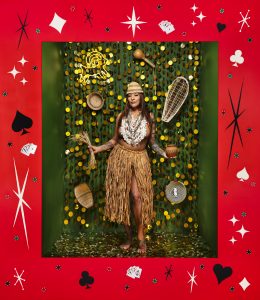For generations, Indigenous communities have carried their stories like heirlooms. They’ve been sung, shared in circles, and whispered to children under starlit skies. But now, something powerful is happening. Our stories aren’t just being told—they’re being published, owned, and protected by the very people who live them. This isn’t just a literary trend; it’s a cultural reclamation.
Native-owned publishing projects are rewriting what representation looks like, page by page. And whether it’s a grandmother’s poetry, a language guide, or a graphic novel by a teenage artist—these works are creating space for voices that have long been sidelined.
Let’s dig into how these publishing projects are rising and reshaping the storytelling landscape.
1. Why Native Publishing Matters More Than Ever
Taking Back Our Narratives
Historically, Native stories were filtered through colonial pens. What was lost in translation? Everything is sacred. From spiritual depth to cultural nuance, mainstream publishers often got it wrong. Native-owned publishers are changing that by letting the community tell its truth—on its own terms.
Representation With Depth, Not Tropes
You know the stereotypes: the noble savage, the mystical elder, the tragic hero. These aren’t stories—they’re caricatures. Indigenous-led publishing throws those tropes in the trash, replacing them with real, multidimensional characters and communities.
Language Revitalization Through Print
Many tribes are racing against time to preserve their languages. Books—whether dictionaries, storybooks, or workbooks—are now tools of resistance and resilience. Small presses are printing language resources that empower the next generation to read, write, and speak the languages of their ancestors.
Owning the Means of Production
It’s not just about what’s published—it’s who’s in charge. Native-run presses decide what gets printed, how it’s edited, and where it’s distributed. That ownership matters. It means profit, control, and cultural integrity stay within the community.
Books as Modern-Day Bundles
Traditionally, a bundle held sacred items. Today, books are bundles of knowledge, memories, lessons, and identity. Publishing them ourselves is an act of cultural continuity, not just content creation.
2. The Digital Age Meets Traditional Voice
Print Isn’t Dead. It’s Sacred.
Despite the digital boom, print still reigns in Indigenous spaces. A printed book feels personal, like holding a living story. It’s something to pass down. Something to give a child or place on a shelf like a sacred object.
E-Books for a Wider Reach
That said, digital formats are helping Indigenous books travel farther. A language guide written on the Pine Ridge Reservation can now be downloaded in New Zealand. Teenagers in Alaska are reading novels written in Cree. Technology is opening doors without erasing roots.
Social Media as a Publishing Ally
You’d be surprised how many Indigenous authors find their audience through Instagram or TikTok. It’s not just memes and dance challenges—Native BookTok is real, and it’s powerful. It builds hype, creates community, and drives sales for self-published authors.
Self-Publishing: Empowerment in Action
Some platforms are really game-changers when it comes to manufacturing books. They let Indigenous creators produce quality books that honor their story and presentation. High-res images, professional covers, and bound pages elevate Indigenous narratives without needing mainstream approval. For many Indigenous creators, the ability to design and print their work without compromising cultural content is revolutionary. It allows storytellers to stay true to their roots while still producing polished, professional-looking books. This independence fosters pride, control, and creativity—especially for emerging writers who once felt gate kept by mainstream publishing. It’s no longer about fitting in; it’s about standing tall and publishing on your own terms.
Podcasting, Zines, and Hybrid Storytelling
Not every story belongs in a hardcover. Some shine best in zines or audio series. Native publishers are experimenting with formats—mixing oral storytelling with print, visual art with poetry, and soundscapes with memoirs. And it works.
3. The People Behind the Projects
Tribal Colleges Stepping Up
Many tribal colleges now have their own presses. These aren’t just campus projects—they’re cultural powerhouses. They print everything from academic research to student poetry to books in endangered languages.
Intergenerational Teams
Publishing is rarely a solo act. Elders bring wisdom, youth bring tech-savviness, and together they create something timeless. You’ll often see family-run or multi-generational teams working together on books that preserve and inspire.
Indigenous Women Leading the Way
From editors to illustrators to press founders—Native women are behind many of today’s most exciting publishing projects. They bring fire, focus, and a fierce dedication to keeping stories honest and heartful.
Grassroots First, Global Later
Many Native publishing houses start local—maybe a tribal newsletter or a school workbook. But the reach can grow. One good book, shared through word of mouth or social media, can spark an entire movement.
Collaborative Spirit, Not Competition
There’s a beautiful lack of ego in many Native publishing spaces. It’s not about who sells more—it’s about who tells more. Publishers often uplift each other, share resources, and collaborate across tribes and borders.
4. Stories Carved From the Community
Memoir Meets Movement
Books like “My Grandmother’s Hands” or “A Mind Spread Out on the Ground” aren’t just memoirs—they’re medicine. Native authors often write through personal trauma to light the way for others. These works are rooted in community healing, not just individual fame.
Children’s Books With Culture at the Core
The new wave of Indigenous children’s books features vibrant illustrations, traditional teachings, and characters that look like our kids. They teach language, values, and pride—without ever feeling like a lesson plan.
Teen Lit That Talks Real
Indigenous teens face unique struggles, and finally, there are books that speak their truth. These stories don’t sugarcoat life on the rez, but they also don’t ignore the laughter, the friendships, the love, the dreams.
Poetry as Prayer and Protest
There’s something sacred about Indigenous poetry. It pulses with rhythm and resistance. Often published in slim volumes, zines, or chapbooks, these works are deeply personal and universally needed.
Art Books as Language Without Words
Some stories can’t be told in paragraphs. That’s where visual storytelling shines. Indigenous illustrators and painters are turning their work into printed books—creating emotional and cultural impact with every brushstroke.
Graphic Novels That Bridge Worlds
Another rising star in Native Publishing is the graphic novel. Blending vivid visuals with layered storytelling, Indigenous comic artists are crafting narratives that resonate with both traditional teachings and modern-day struggles. These books aren’t just cool—they’re accessible. They pull in readers who might not pick up a novel but will dive into a story told through striking artwork and bold characters. Whether it’s a superhero rooted in Anishinaabe lore or a dystopian world shaped by colonial history, these graphic novels hold depth. They prove that Indigenous storytelling has no format limits—just limitless vision.
5. Challenges? Yes. But Not Roadblocks.
Funding the First Print
Printing books—especially beautiful, high-quality ones—costs money. Many Native publishers rely on grants, fundraisers, or community investment. It’s a hustle, but the end result? Worth it.
Distribution Dilemmas
Getting books onto shelves (or into homes) isn’t easy. Many mainstream stores don’t stock small press titles. That’s why Native creators often sell directly at powwows, festivals, or online. Where there’s a will, there’s a vendor booth.
Balancing Profit With Purpose
Some publishers are for-profit, and some are nonprofit. But all face the same question: How do you sustain a business while honoring the culture? It’s a balancing act—between staying true and staying afloat.
Gatekeeping in “Inclusive” Spaces
Even today, Indigenous voices are underrepresented in mainstream “diverse” publishing categories. Native presses often face the double burden of creating space and proving they belong in it.
Keeping It Community-Led
As success grows, so does pressure—from funders, from academics, from outside collaborators. Staying rooted in community needs—not external expectations—is the compass that keeps Native publishing projects true north.
6. What the Future Holds
More Books in More Languages
Imagine a bookshelf with 30 Indigenous languages, all in print. That future is closer than you think. With youth engaged and elders consulted, the movement is gaining steam.
Hybrid Hubs of Creation
Publishing isn’t siloed anymore. Many Native projects are blending bookmaking with workshops, digital storytelling labs, and language immersion programs. These aren’t just presses—they’re cultural ecosystems.
School Curricula That Actually Reflect Us
Teachers and parents are hungry for books that tell the truth, beautifully. Native publishers are answering that call with history books, biographies, and fiction that belong in every classroom.
Global Reach, Local Heart
From Canada to Bolivia, Maori to Lakota, Indigenous publishing is becoming a global network. Shared techniques, shared wisdom, and shared pride are uniting communities across continents.
A Generation of Indigenous Authors on the Rise
The future isn’t in waiting rooms—it’s on keyboards right now. Young Indigenous writers are already blogging, screenwriting, and journaling. Give them the tools, and they’ll give the world the next wave of literary legacy.
Conclusion: These Pages Hold Power
Our stories have always mattered. But now, we’re not just telling them—we’re publishing them, designing them, and distributing them ourselves. Native-owned publishing is more than a literary shift—it’s a cultural movement and one that won’t be silenced. These aren’t just books. They’re blueprints. They’re bundles. They’re declarations that we are still here, and we’re not asking for a voice—we’re printing it.











